Robert Frost said, “good fences make good neighbors,” but choosing from the many types of fences available is no easy task. Your personal style, the fence’s purpose, and the kind of home you are adding to all play a role in your decision.
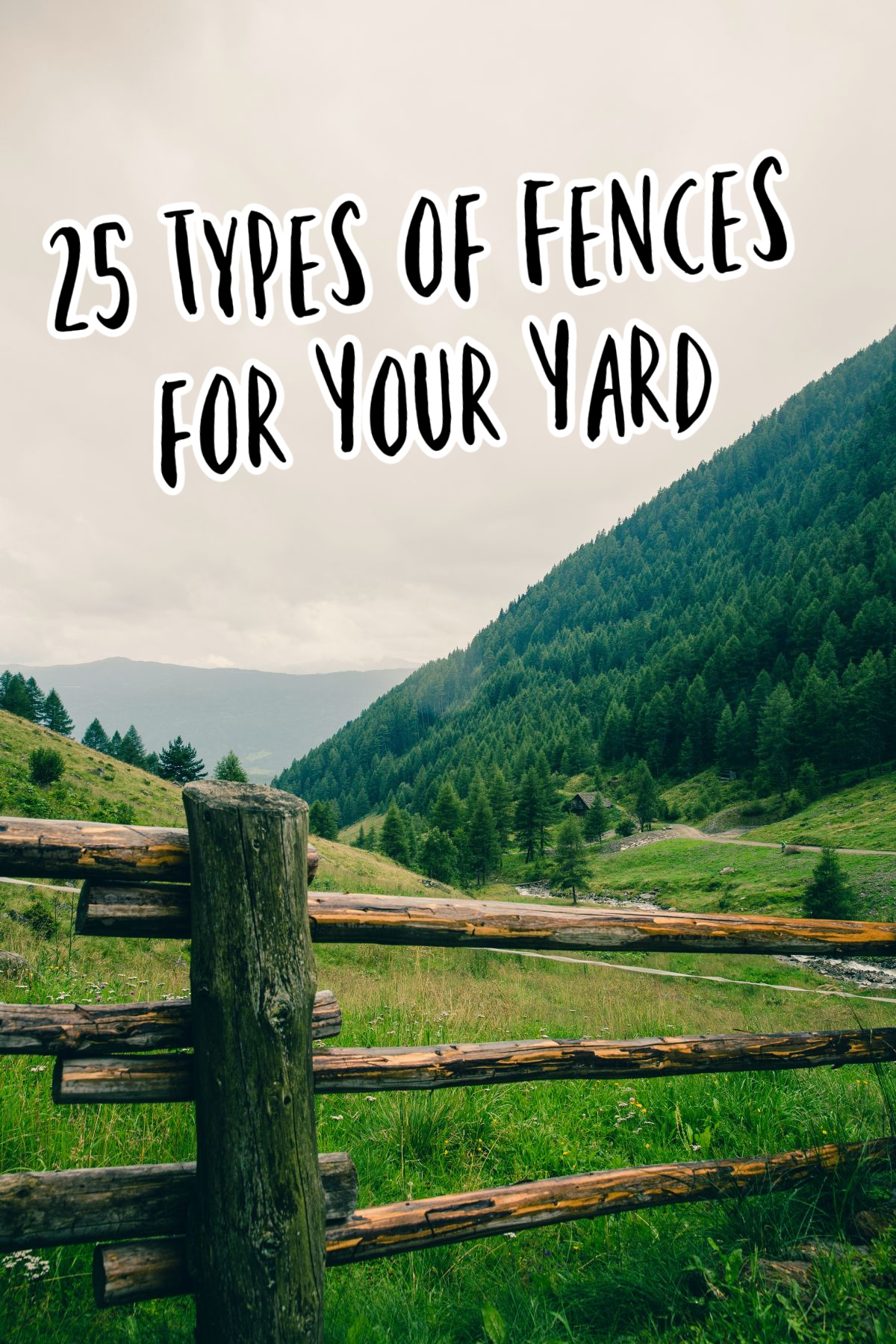
You also need to consider what you are trying to keep in – or out – of your yard. Is it to protect your children, your pets? Or maybe you just like your privacy?
Your first decision will be what material you want it to be made of. Several standard options and a few custom ones are available.
Common Materials for Different Types of Fences
Fences come in wide varieties, made from standard to more customized options. There are even subvarieties you can choose from.
- Wood
According to Home Depot, this popular option comes in several varieties, including cedar, redwood, and southern pine.
- Vinyl
Vinyl is durable and resistant. And unlike wood, it doesn’t need to be finished or treated to resist rot or insects. It comes in kits, or preinstalled panels are low maintenance, and can be hosed down when it gets dirty.
- Composite
Composite fencing has a higher upfront cost but is designed to last and combines the look of wood with the durability of vinyl.
- Aluminum
Aluminum fencing is an excellent choice if you want a low-maintenance fence that provides security. They can keep kids and pets in your yard and strangers out.
They are one of the more economical options available but don’t provide much protection.
- Chain Link
Chain link is incredibly affordable but not the most attractive option. If you are installing a fence that can’t be seen from your home or aren’t concerned with its appearance, it is quick to install and excellent for security.
- Wrought Iron
Wrought iron is an attractive but expensive option. It is prone to rust but otherwise low maintenance and durable.
- Specialty Materials and Designs
There are several reasons you might need a specialty fence. Sloped or uneven yards, pools that need to be fenced for safety, and livestock or horse fences all fall in this category.
Tips for Choosing the Best Fence Style for Your Yard
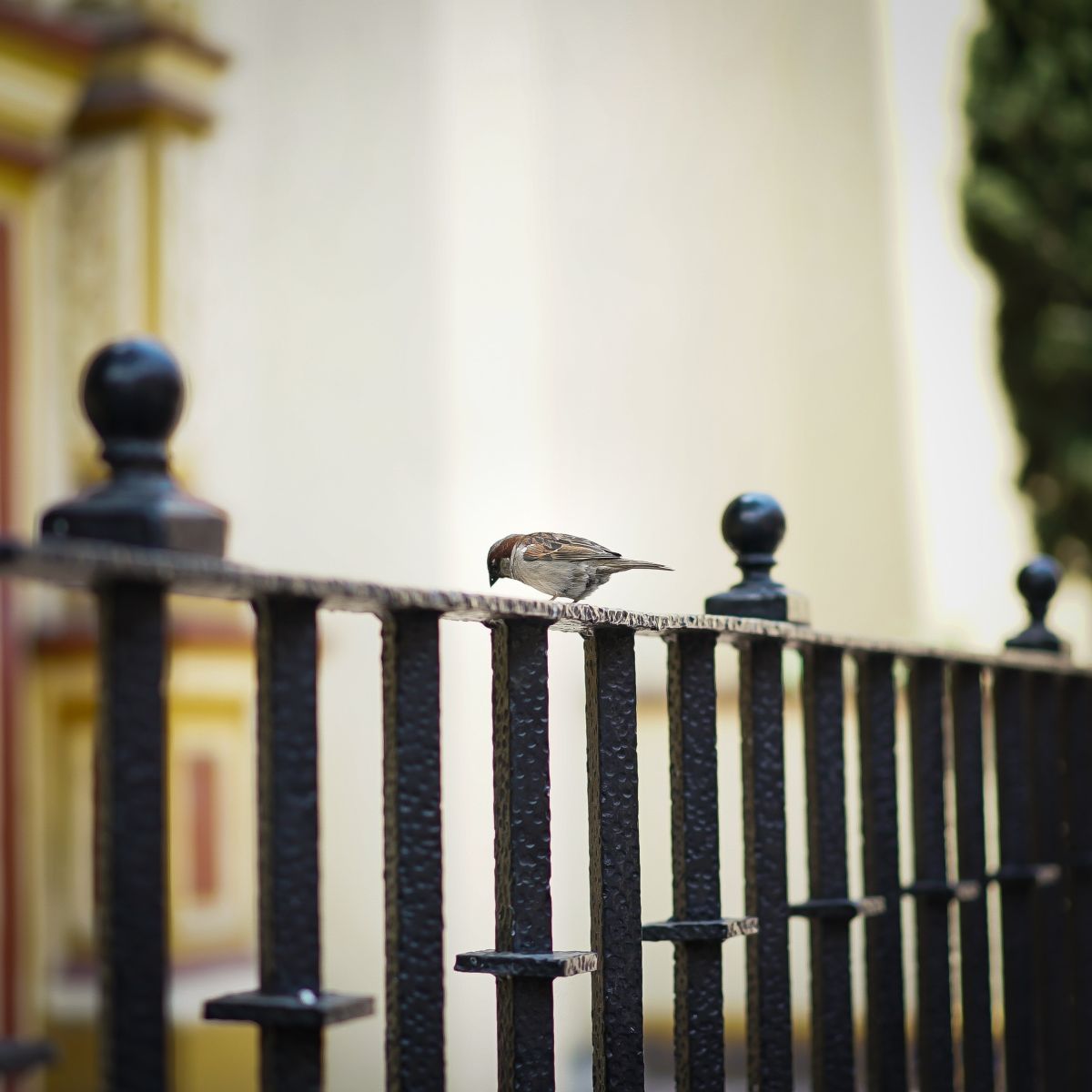
1. Consider Your Reasons for Installing a Fence
This should be your first decision when considering types of fences. Do you want privacy? Are you trying to keep intruders out? Or children and pets in?
Ornamental metals are great options if you want a decorative fence. Wood, composite, and vinyl are better options if you don’t want people looking or walking into your yard.
Chain link is inexpensive, but it may not be the best option if you care about what your fence looks like.
2. Determine Your Budget
Next, you need to consider your budget. The option that most appeals to you may not be one you can afford.
And your fencing material isn’t the only cost to take into consideration. Unless you plan to DIY, you’ll also need to consider installation costs.
Home Advisor estimates installation costs at $1,717-$4,334. This, of course, depends on the size of your yard. A typical job takes around 150 linear feet of fencing, and the national average to install it is $2,945.
This may seem like a more considerable investment than you anticipated. But Angi reminds us that the right fence adds to your curb appeal and can even increase your property value.
3. Decide What Types of Fences Material(s) to Use
Each material has its own pros and cons. Wood, for example, is inexpensive and provides privacy. But it has a short lifespan of only 10-20 years.
Aluminum is secure and low maintenance but doesn’t provide as much privacy as wood. Vinyl is another low-maintenance option.
It’s durable and comes in more colors. But it’s more expensive and can warp or crack in hotter temperatures.
Wrought iron is expensive and prone to rust but will likely increase your home’s value and curb appeal. And chain link is affordable but not the most secure option, as intruders can climb over it.
4. Consult Your HOA
Not everyone has an HOA, but if you belong to one, you’ll want to check with them before making any property changes.
In addition to getting permission to change your property, your home owner’s association may have strict height, material, and color rules.
5. Research Your Property Line
This information may be included in your deed. If not, you can hire a surveyor to find it for you. If you have your fence professionally installed, this may be a service they provide, so be sure to ask.
And never install a fence without finding out this information. Neighbors could lobby to have it taken down, leaving you with the expense of demolition and reinstallation.
6. Hire a Pro or Buy Your Types of Fences Materials
If you plan to install your own fence, your next step is to source and buy your materials and figure out a timeline for putting it up.
If you plan to use a professional, you will likely still need to buy your own materials and decide who to hire. Places like Home Depot and Lowe’s often offer installation services for their products.
Things to Consider When Building Your Fence
When building different types of fences, there are many things to consider, especially if it’s the first time you’ve installed one.
Better Homes and Gardens reminds us, for instance, that when installing a privacy fence, the smooth side should face your neighbor, and the rails and posts should be on your side.
You should also be upfront with your neighbors about plans to install any kind of fence. In some areas, fencing costs are shared between neighboring parties. These agreements should be made in writing.
You can also consider mixing different types of fencing. This could be for affordability or design purposes. It can make for a more exciting design and reduce the need to refinish higher maintenance materials.
In cold environments susceptible to frost, fence posts need to be secured in concrete anchors. They should be sunk 36 inches deep to avoid cracking in cold weather.
Vinyl is best in warm, damp climates as wood is susceptible to warping, and metal can rust.
You also need at least one entrance gate; two or more are ideal. Ensure they are large enough to accommodate trash cans, lawn mowers, and other landscaping equipment.
Finally, consider adding finials or posts for a decorative touch.
Things to Consider When Choosing a Fence Color
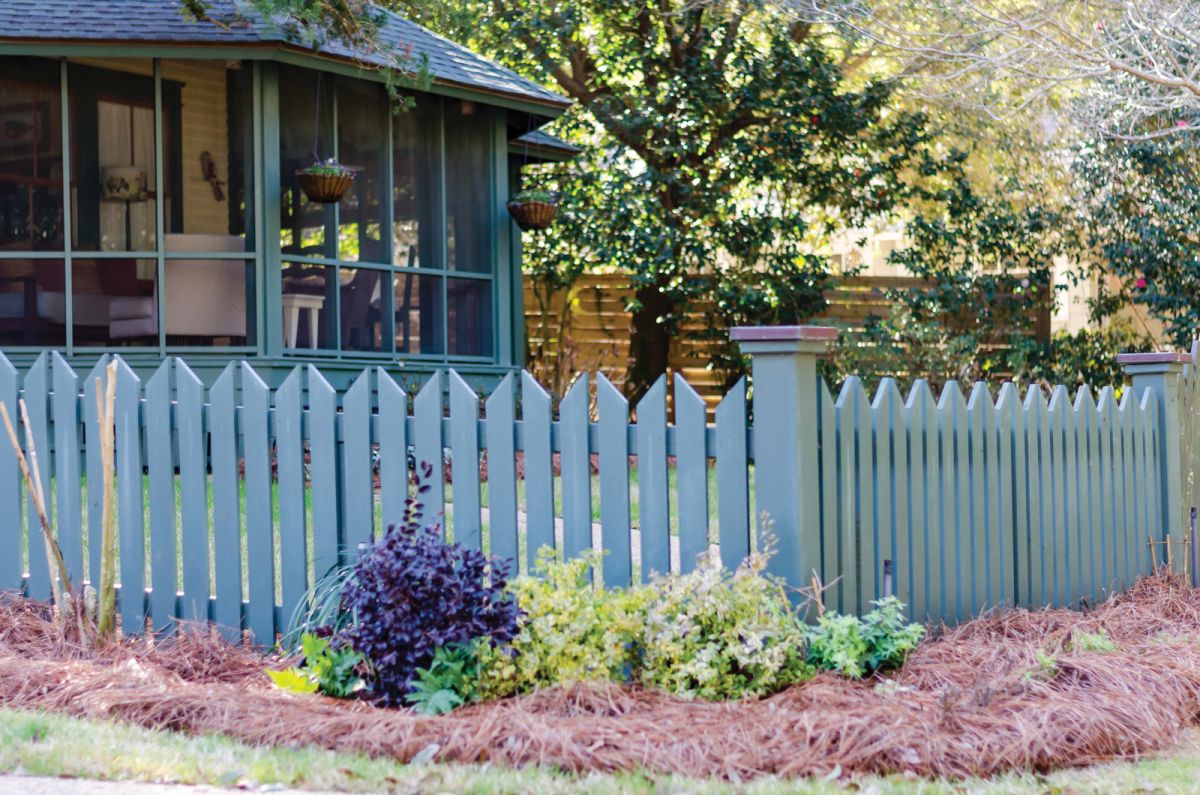
You’ve picked your perfect fence – you know the materials, your budget, how much you need, and whether you wish to pay for installation or DIY. But you’re not done yet.
You still need to decide on a fence color. This choice could be the difference between no-way blasé and a truly stunning addition to your home and landscape.
Traditional cottages or colonial homes are complemented well by crisp white fences. Rustic ranches or farmhouses do best with dark, rich oak stains.
Brick and Mediterranean styles are often best complemented by matte black, wrought-iron fences.
In addition to complementing your house, you must consider the rest of the environment. Bright primary colors could be ideal in beach communities or around a daycare facility.
But they won’t work in most other settings. Neutral, dark green paints or medium oak stains help fences in these areas blend in.
Secure Fence and Rail also suggests matching your fence color to your shutters and house trim for a cohesive look.
Another thing to consider, reminds Maria Killiam, is the effect of weathering on your stained – or unstained – wood. In either case, it needs to be maintained. Unstained wood weathers to gray pretty quickly.
But semi-transparent stains will do likewise after 2-3 years unless you reapply. Oil-based solid stains will last for 5 years, and latex for 3 years.
But if you choose a solid stain or paint, you cannot go back to a semi-transparent or let your wood weather if you change your mind.
You have to maintain or strip and start over. Vinyl doesn’t weather but comes in colors that, once you choose, you cannot change without significant expense.
25 Types of Fences for Your Yard
You’ve made most of your decisions at this point. But there are still some things to consider. There are many options for lining your yard for the most effective architectural design.
1. Wood Lattice Fence
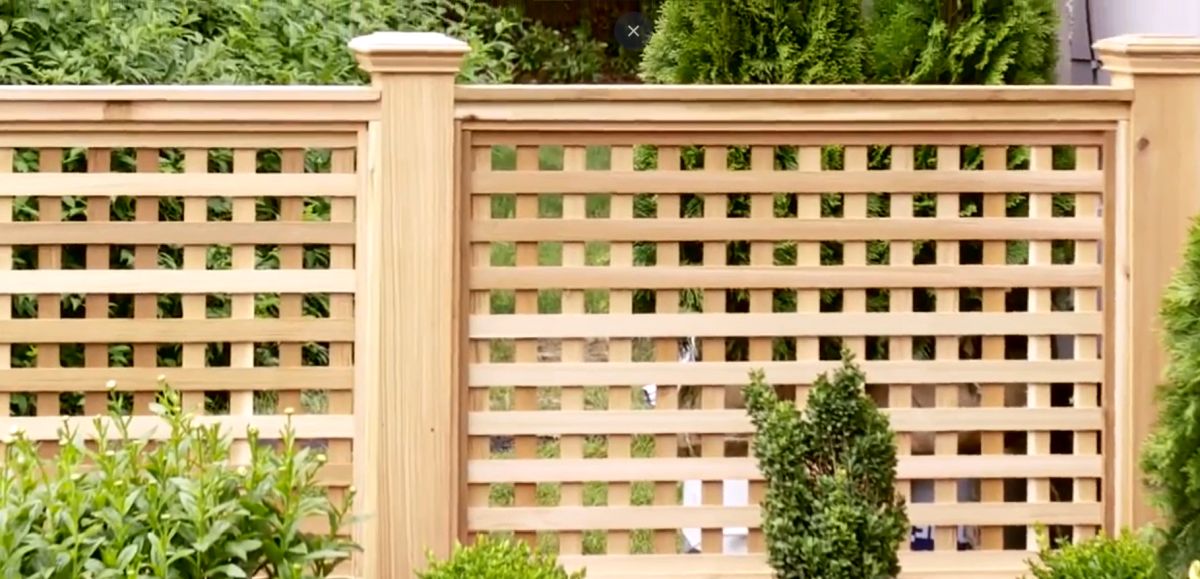
Wood lattice fencing is beautiful, and the good news is that this is not a terribly complex project. It can even be economical if you do it right.
This Old House recommends using cedar sleeving on pressure-treated posts instead of solid cedar to save on costs. Square lattice fencing with chunky posts might make you the best-looking home on the block.
2. Louver Fence
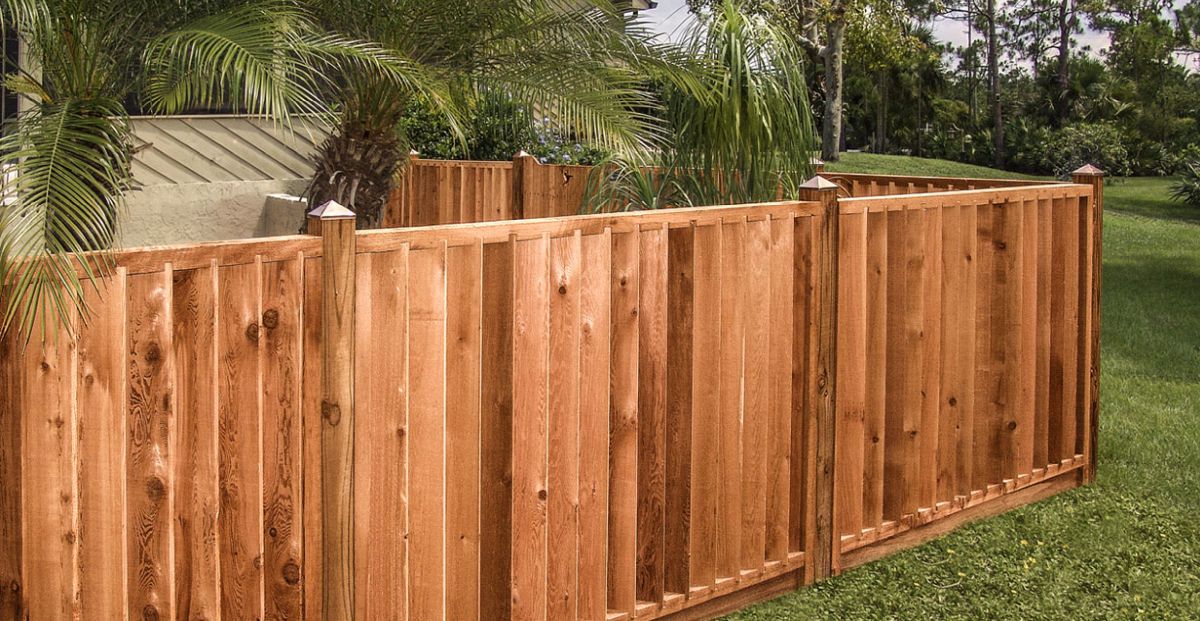
Louver fencing is not only attractive but also practical. Fences can be horizontal or vertical, and the slats allow for both security and ventilation.
Jefferson Fence specializes in this type of design. It is easy to assemble, has clean lines, and provides visibility from one side and privacy from the other.
3. Vertical Board Fence
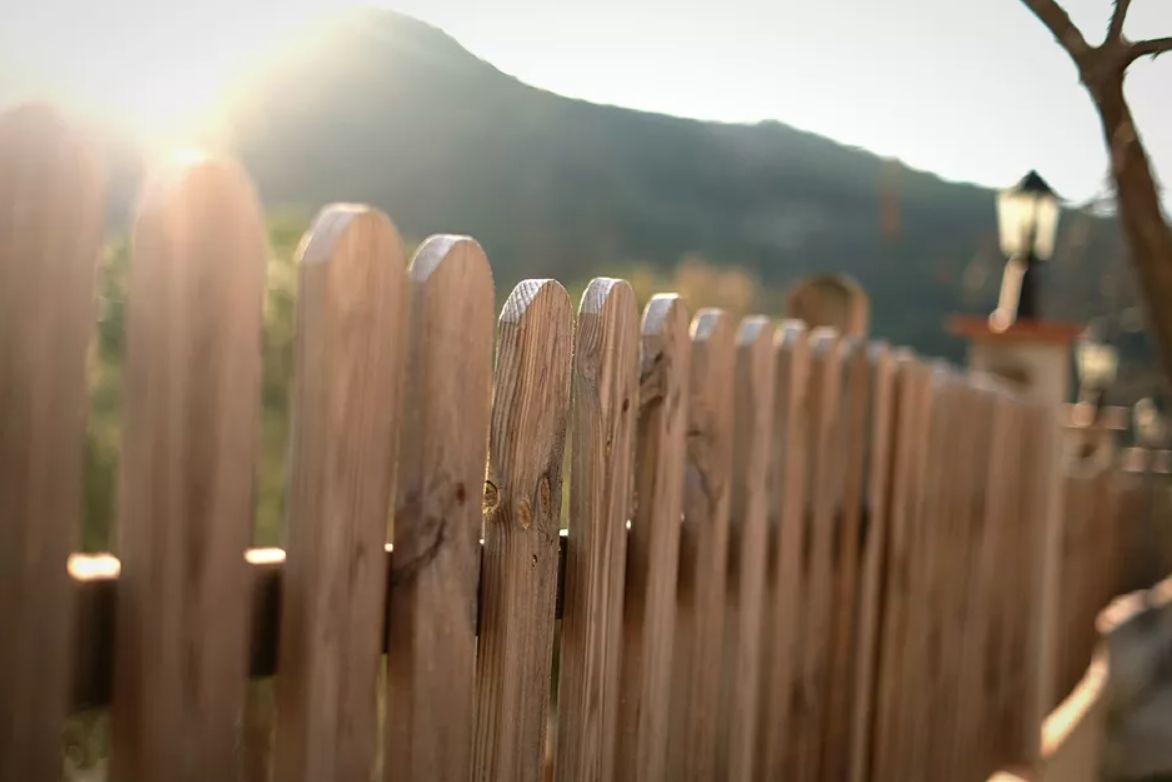
According to The Spruce, Vertical Boards are among the most common types of fences. Gravity does not affect them like horizontal boards.
This makes it ideal for use in uneven or sloped yards. Horizontal options may look more contemporary, but vertical lines will be cleaner if the ground in your yard is uneven.
4. Ornamental Fence
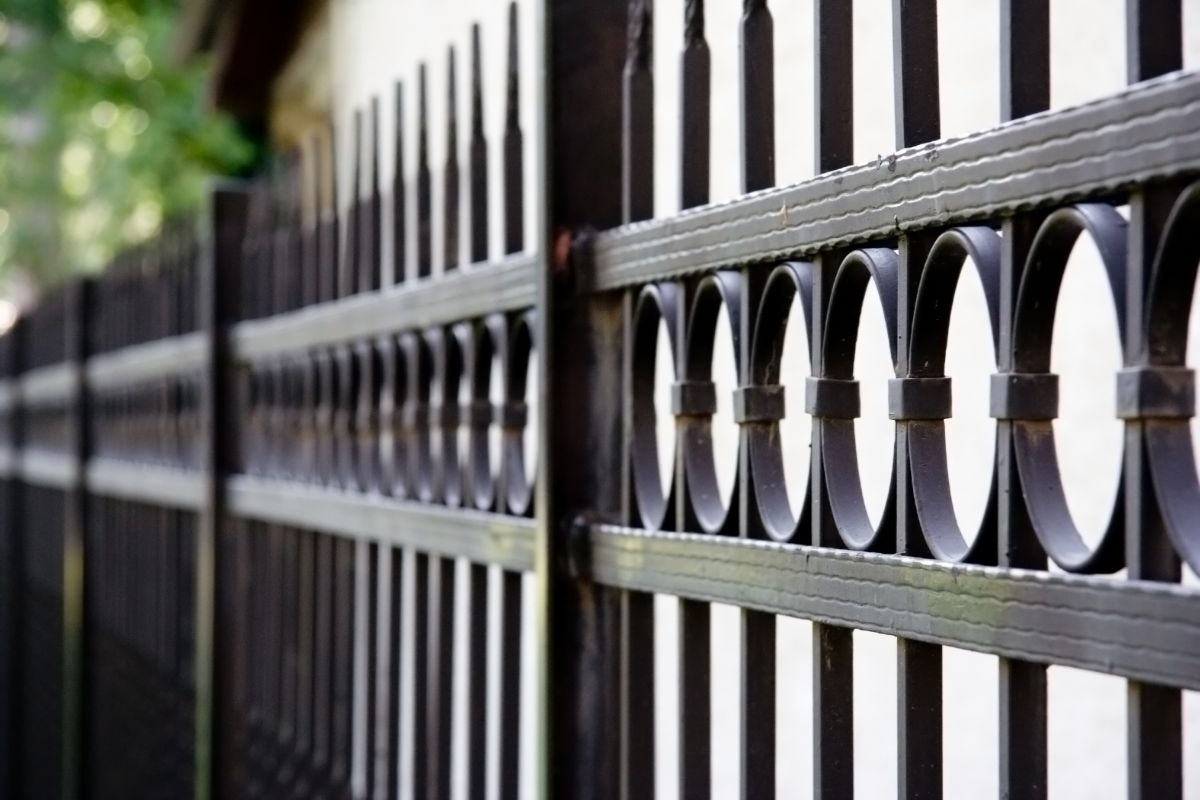
Ornamental fences can be made from aluminum, iron, or steel. Aluminum is the most popular, according to HoCo Fence.
It is inexpensive, easy to maintain, and often made from recycled and recyclable materials. Steel or iron is stronger and more durable, however, and offers a variety of finishes.
5. Wattle Fence
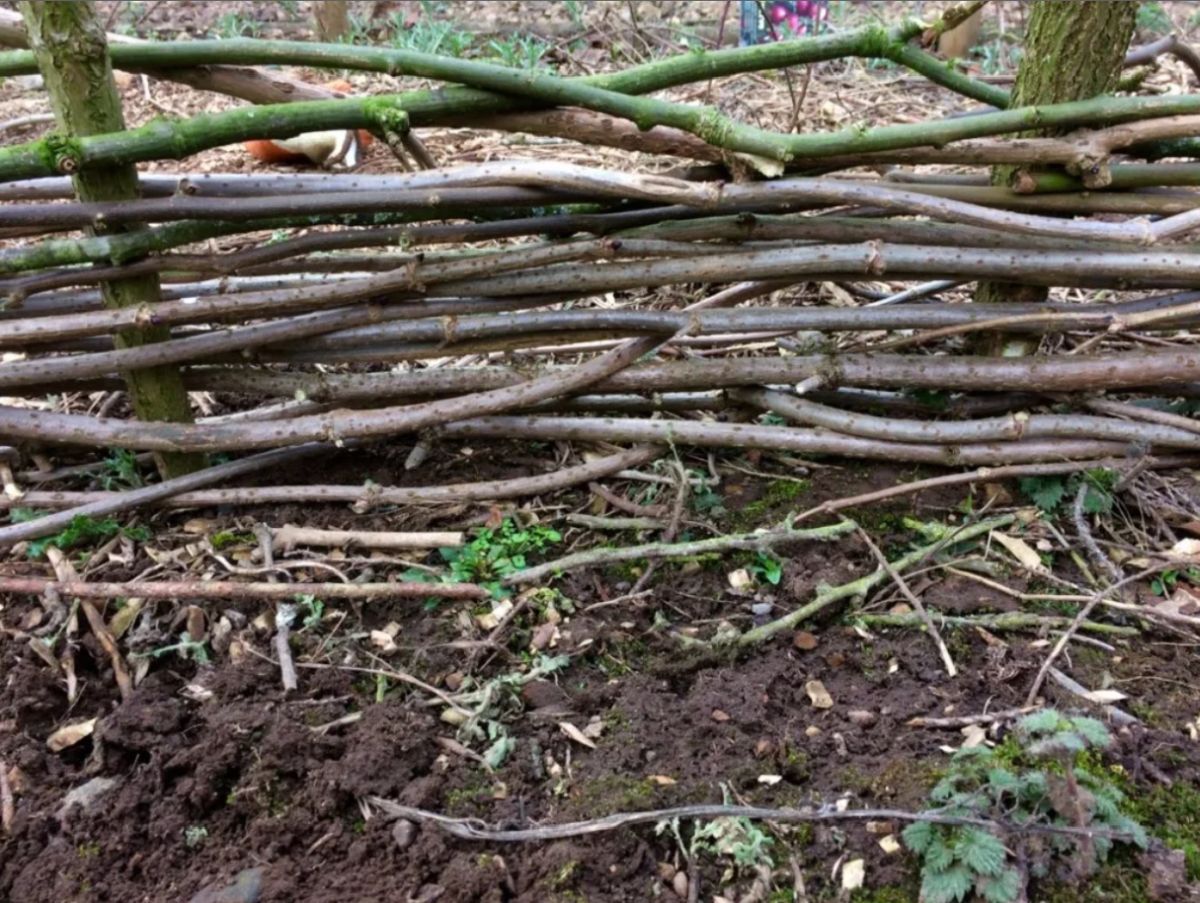
Rustic wattle fences are lovely options you can build yourself. One Acre Vintage Home discusses how and why they made one of these types of fences in their yard.
Constructed of upright wooden stakes with branches woven together, they can be used to enclose yards, garden beds, or even livestock.
6. Glass Bottle Fence

Looking for something to do with your old bottles and need a fence for your yard? Home Grown Adventures saved up wine bottles to build their fence.
As they point out, you can’t redeem wine bottles at your local recycle center anyway, so why not upcycle them instead?
7. Old Doors Backyard Fence
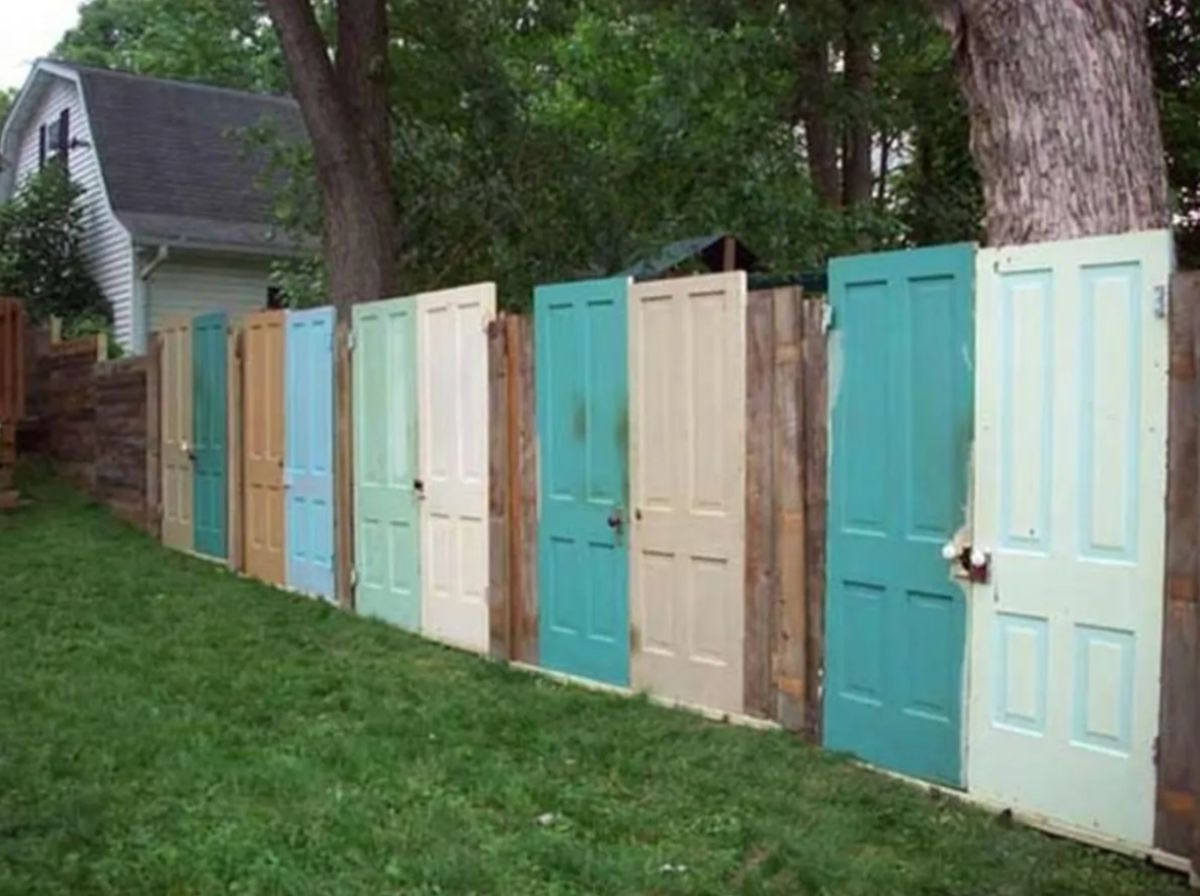
If you’re looking for another way to upcycle some old items, this option from Dives and Dollar is an excellent choice. It will make a statement while preventing clutter in your garage or unnecessary additions to your neighborhood landfill.
Painting some old doors and stringing them together in your backyard will give you the privacy you’re looking for and create a work of art and topic of conversation.
8. Stained Glass Fence
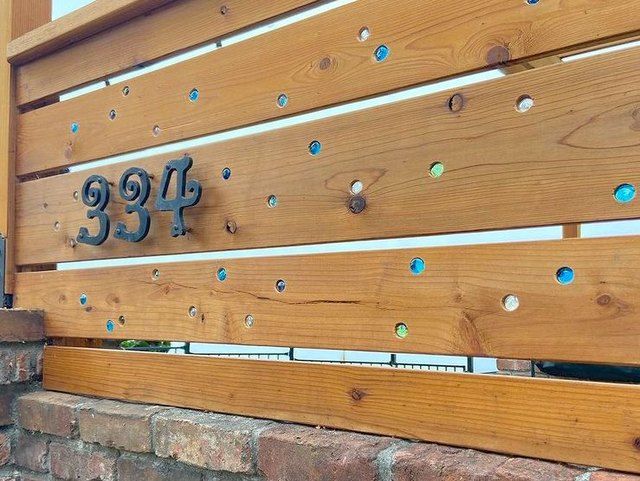
You’re on the wrong track if you’re imagining stained glass windows and panels. This is a twist on that trend, where glass marbles are added to a wood fence to create a stained-glass-type effect.
Hunker tells you how to recreate this terrific TikTok design with marbles, a drill bit, and a tube of strong glue.
9. Bamboo Fencing
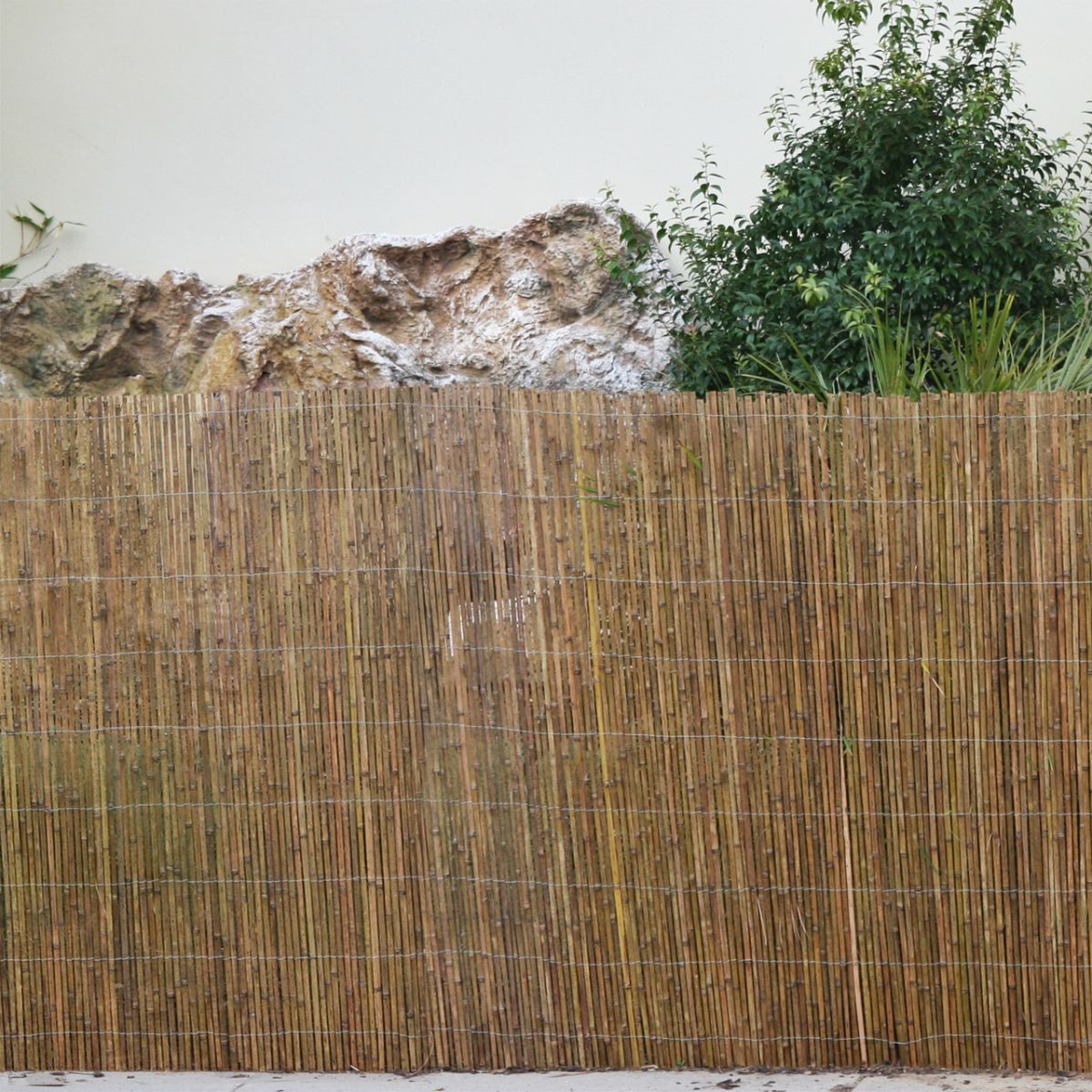
Bamboo fencing comes in rolls and is available at most home supply and hardware stores. There are specialty suppliers, as well.
Forever Bamboo provides natural, black, burnt, and brown caramel varieties. They also offer sealants and stains to treat and color your bamboo fence.
10. Stone Wall Fencing
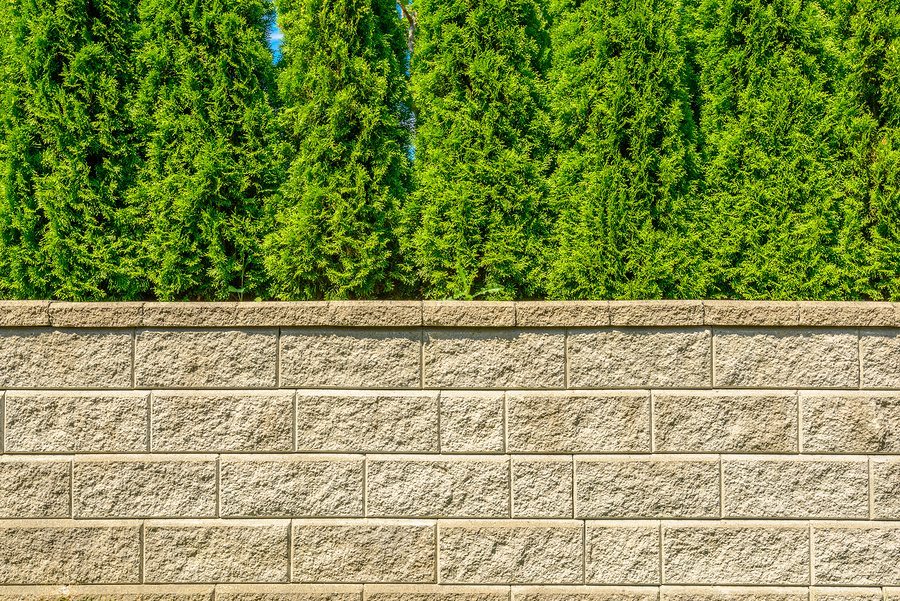
Stone fences can make gorgeous additions to your landscape design, but they come at a cost. Brents Custom Fence discusses the pros and cons of these particular types of fences.
Pros include durability, aesthetics, and ease of sourcing your materials. Cons are that they are time-consuming to build, difficult to repair, and cannot be easily altered.
11. Simulated Stone Fencing
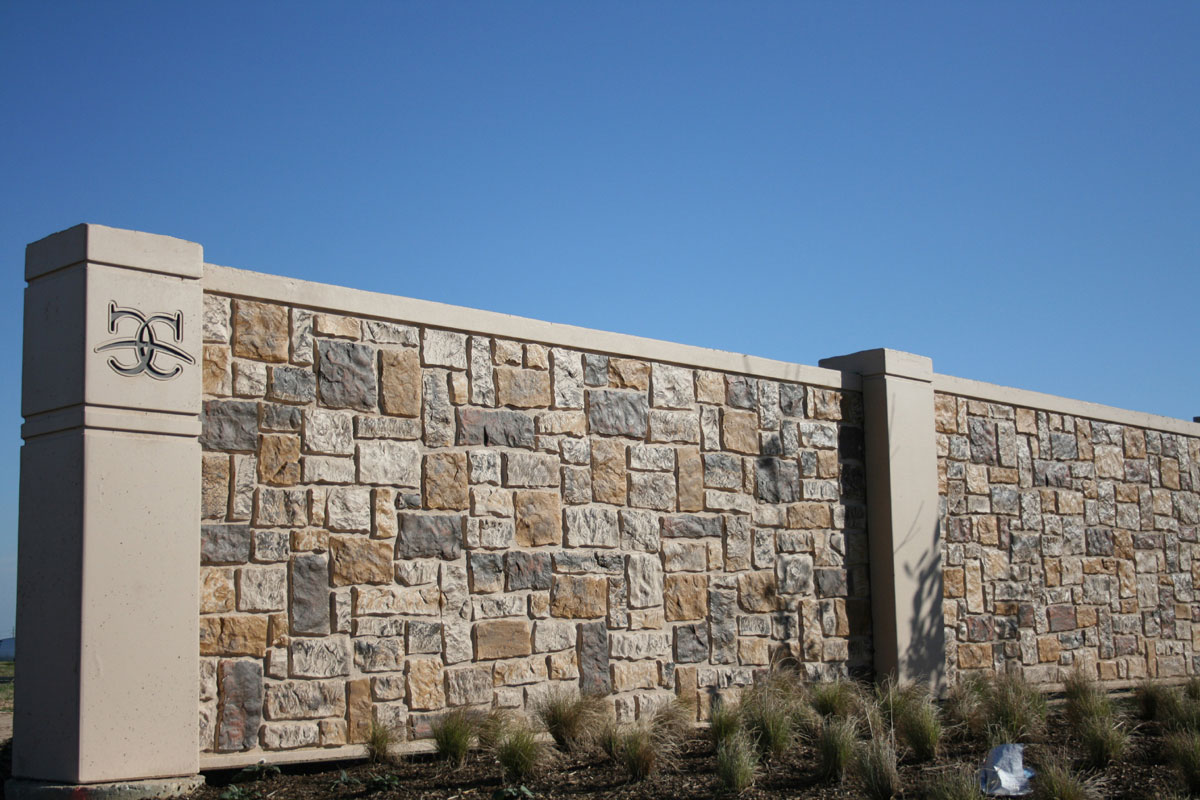
Simulated stone fencing can be an excellent choice if you like the pros above but not the cons. Aftec precasts simulated stone walls and fencing and point to ease of care, a natural look, and insect resistance as pros for this option.
It is also less expensive and time-consuming to install.
12. Glass Panel Fencing
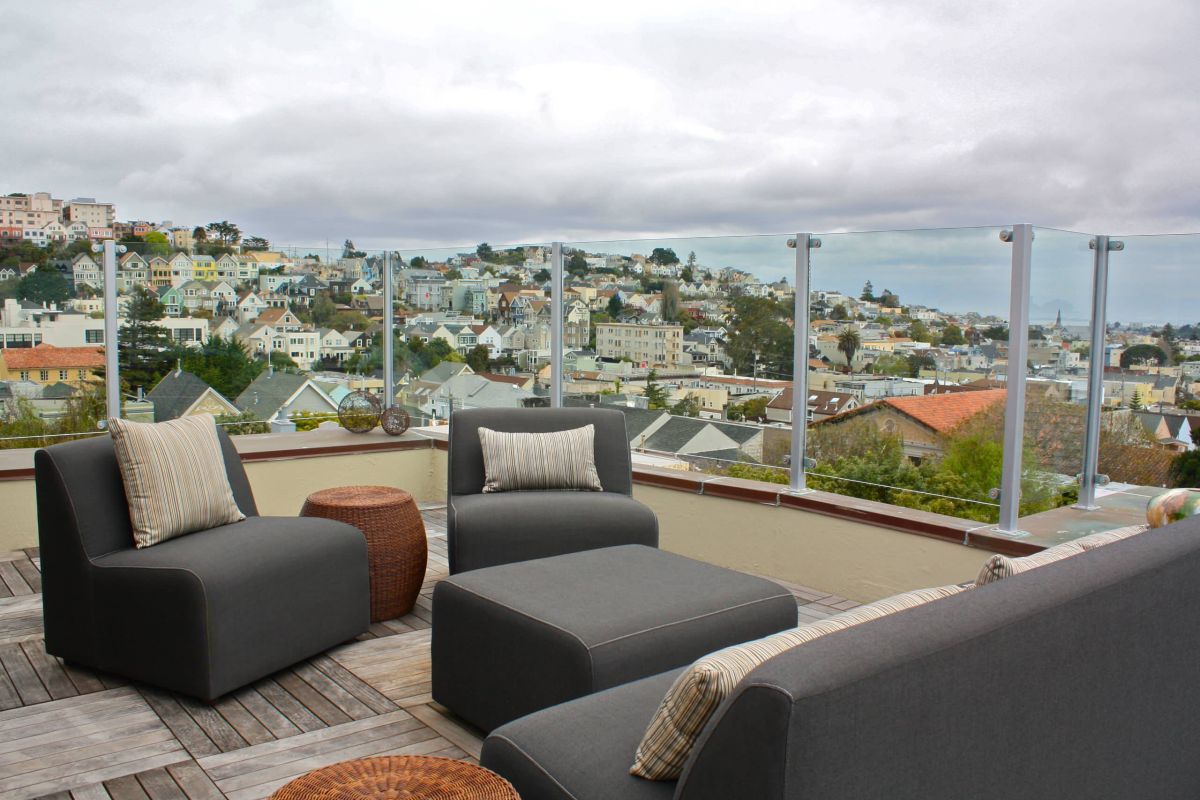
This option works best around pools or if you have a view you don’t want to obstruct. And InstallIt Direct points out that glass panels can make your space look bigger. It is also durable and fits nearly any design style.
Cons include being high-maintenance to clean (on both sides), it poses a hazard to wildlife, and it scratches. It is also expensive. Plexiglass is more economical but tends to film and scratch over time.
13. Wall with Textures
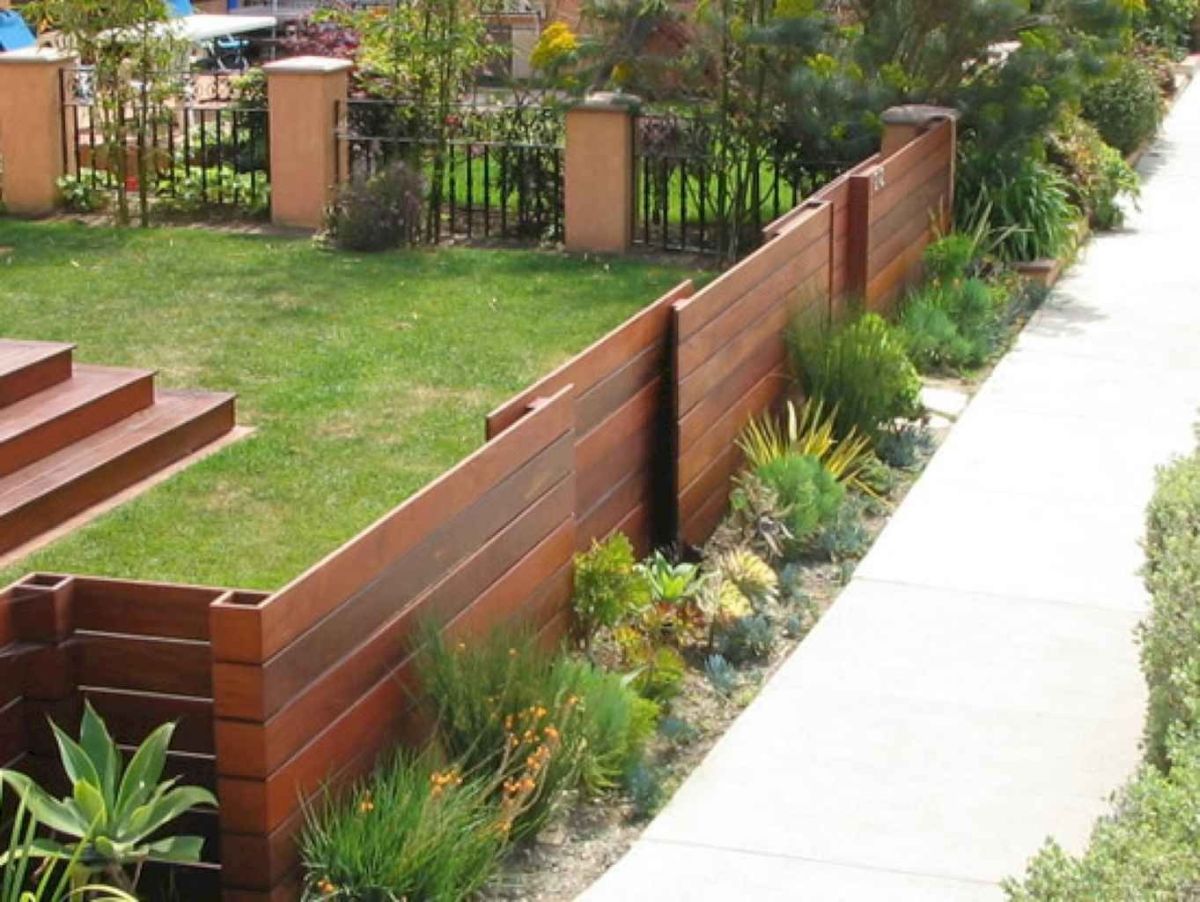
There are many ways to add texture to your fence walls. Just ask Reno Walls. They come in wood, metal, and stone. Some options include textured wood walls with intricately designed iron gates for a truly unforgettable look.
14. Concrete and Wood Combination
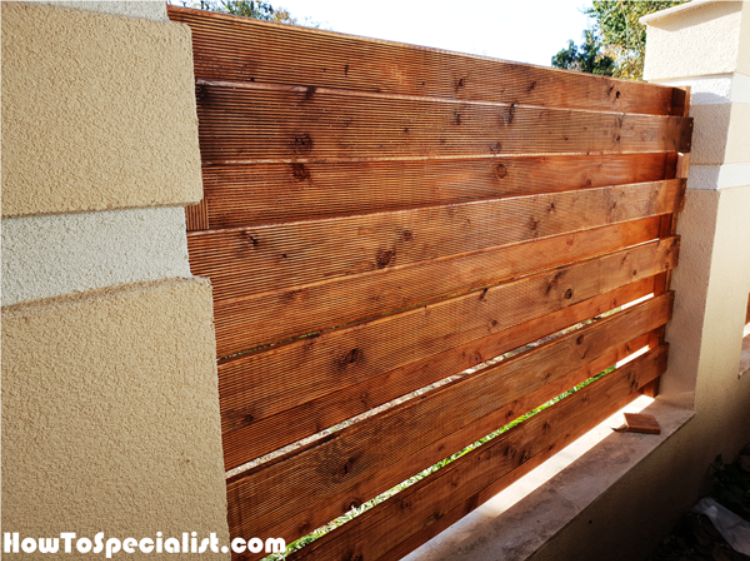
Concrete and wood combine to make a stunning front or back yard fence. How To Specialist explains the process of installing one of these. But it’s no easy feat, so expect to spend a lot of time or money if this is the look you want.
15. Surfboard Fence

This is an ideal option if you’re fencing in your beach house. Dives and Dollar explains that stringing together a handful of colorful surfboards can really make your yard and fence pop.
16. Brick Wall Fence
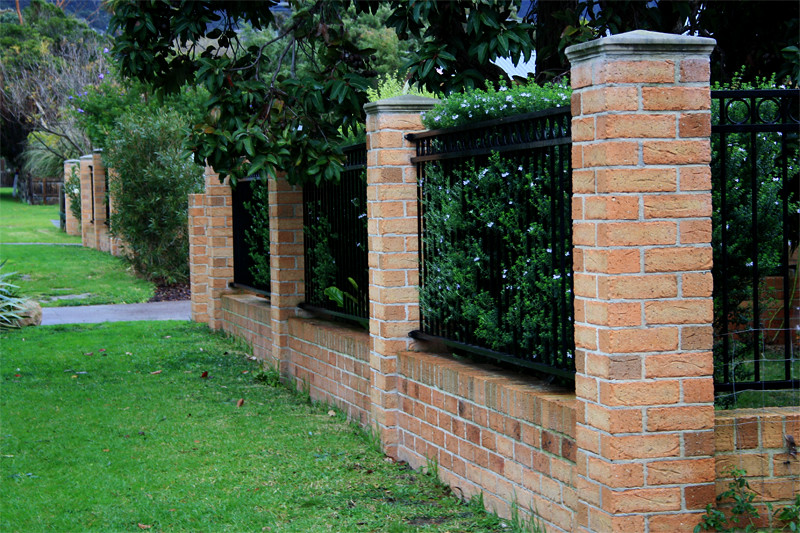
Love Home Designs will walk you through the steps to building a brick wall fence around your yard. According to them, there are many options to choose from.
You can add wood or iron gates or top them with trellises. You can even line them with flowers or vines.
17. Living Fence
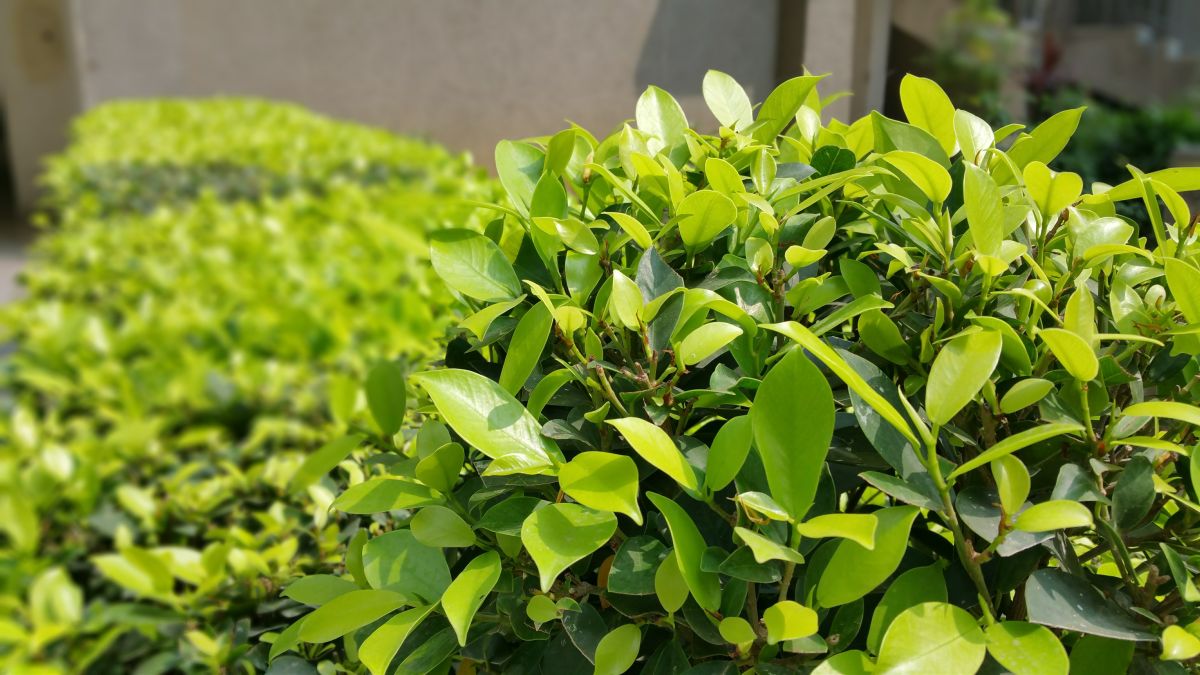
If you don’t want to just grow greenery on or in your fence, this is the option for you. You can either grow shrubs or plant things that grow up along fence panels.
The good news is that your fence panels can be made of any material you choose.
18. Basket Weave Fence
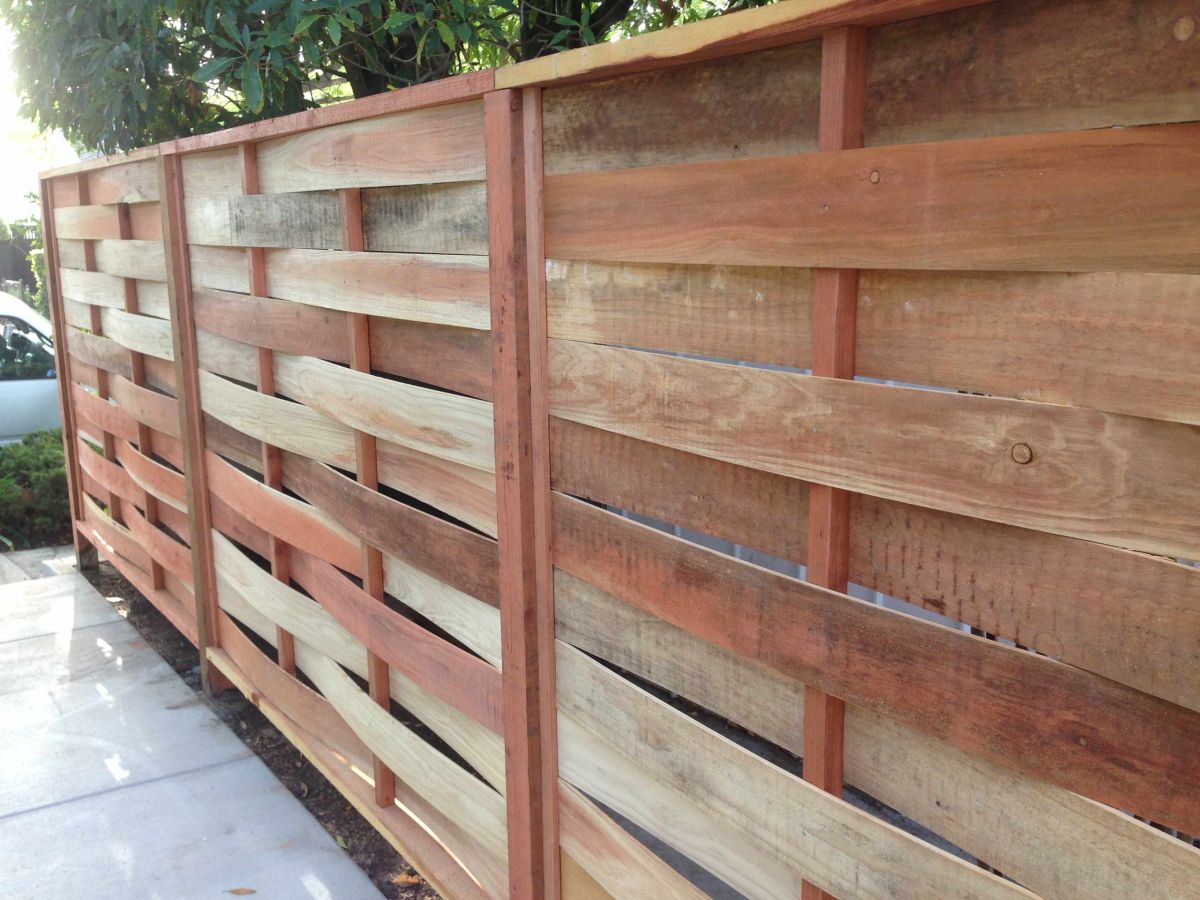
Home Depot has instructions for this one. They do, however, list it as an intermediate-level build project. It requires setting up struts and posts and weaving the wood panels in between. This creates a stylish, sophisticated look.
19. Corrugated Metal Fence
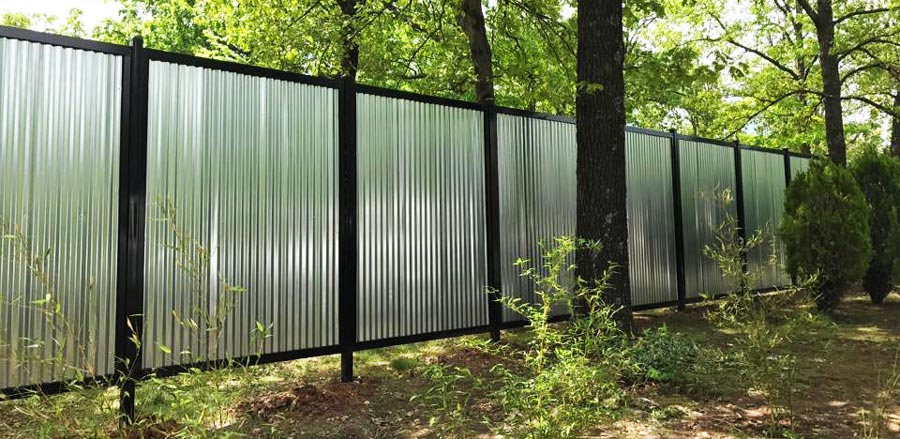
This is another low-maintenance installation job. Rustic and green or verdigris are common options. But you can also buy painted versions if you’re looking for a more solid color scheme.
Or you can get custom versions designed to resemble the wood posts they are attached to, all available at Perimtec.
20. Gabion Fence
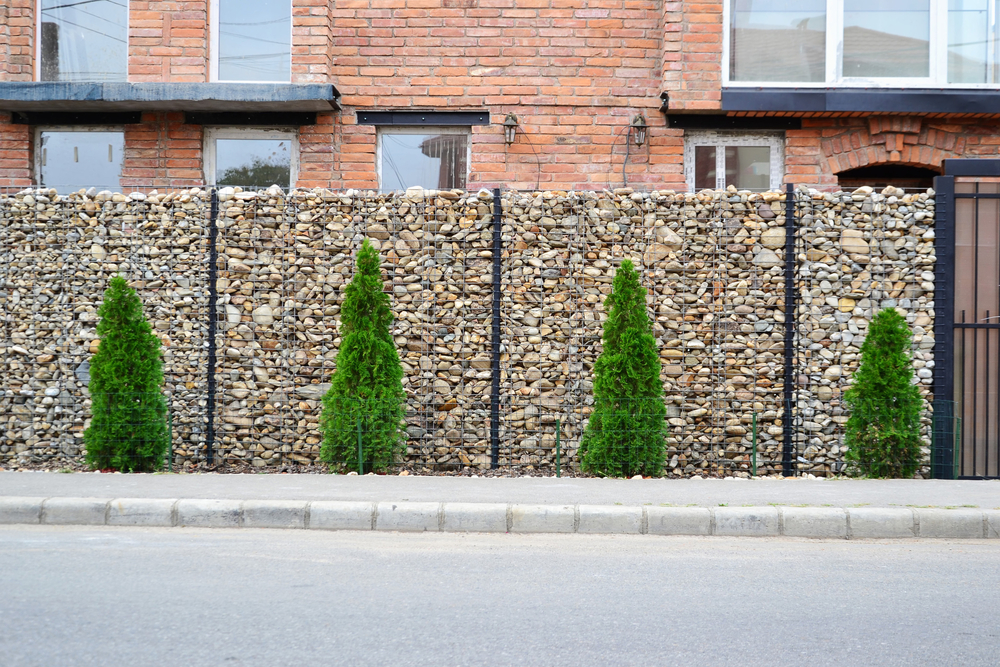
Gabion walls or fences resemble stone walls. The difference between these types of fences and stone walls is that gabion walls are clusters of rocks, stones, and other materials gathered together in a cage.
Gabion Reviews sells the cages to build your own walls and points out that, once filled, they make excellent retaining walls.
21. Japanese Inspired Fences
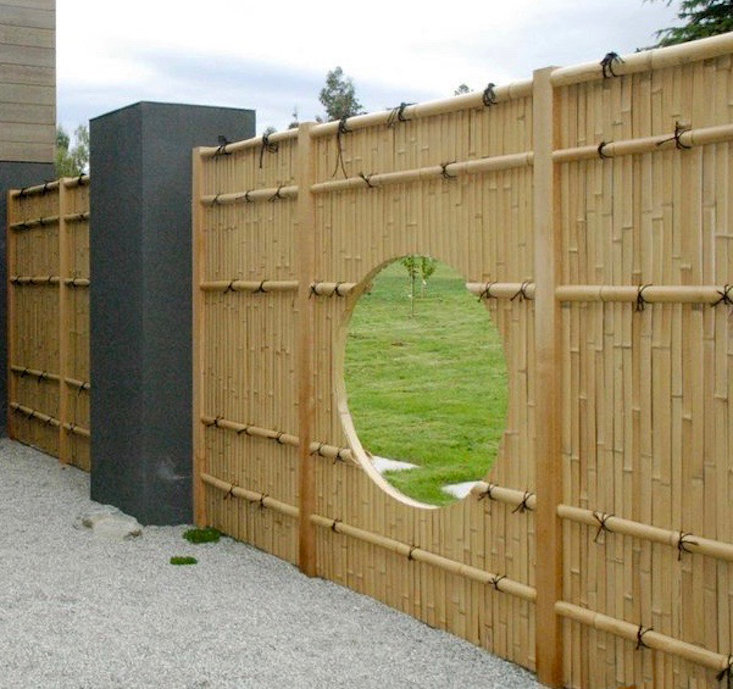
Home Depot offers a plethora of Japanese Inspired fences. Home Lily has selections made from wood, metal, bamboo, and more. If you want something more elaborate, you can opt for more high-end objects, like stained glass.
22. Split Rail Wooden Fence
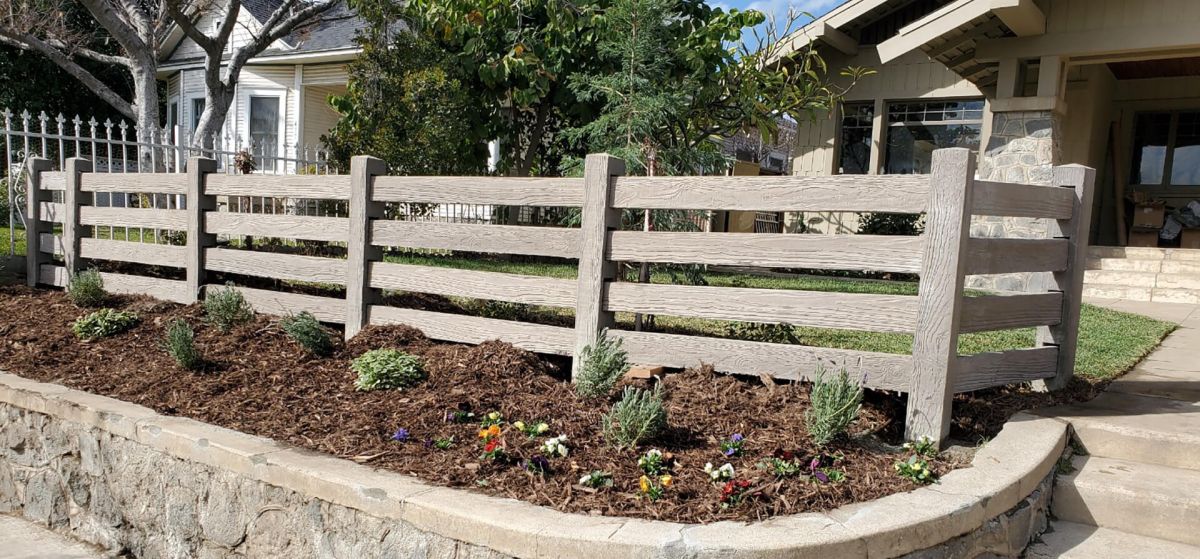
The split rail fence is a modern marvel of minimalism. Better Landscaping explains that all you need to build this fence or to have it made is the wood. This style is best suited to rustic and stone houses.
23. Card Fence
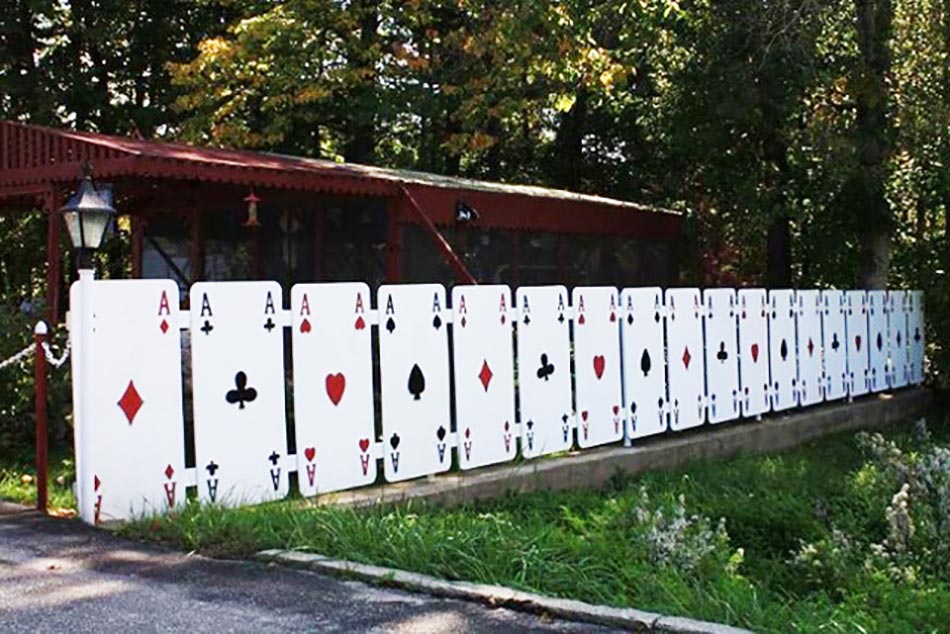
Dives and Dollar has some fascinating design ideas. One of these is the fence of cards. The panels of this fence are similar to the ones you would find in a glass panel wall.
The difference is that these panels are designed to look like giant playing cards.
24. White Picket Fence
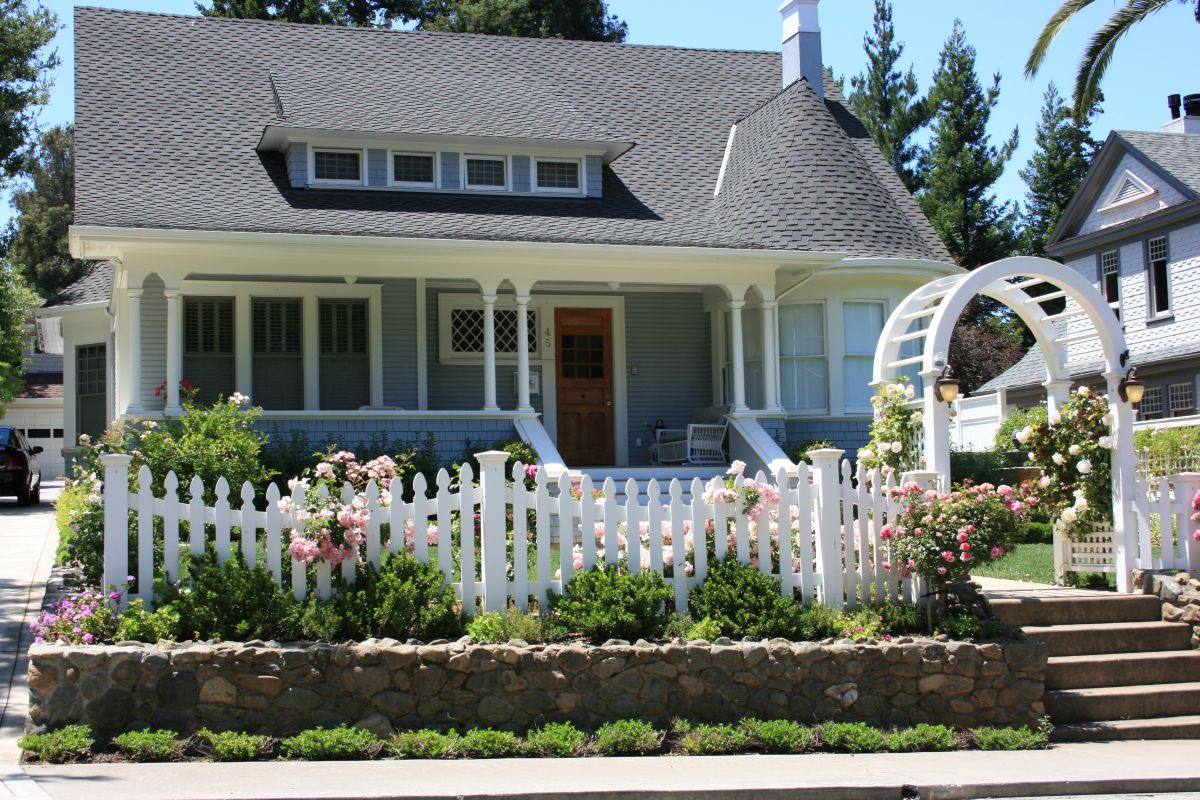
This is the ultimate in traditional types of fences. According to Better Landscaping, the style has been around for ages. It’s simple, functional, and works with nearly every type of home.
25. Ski Fence
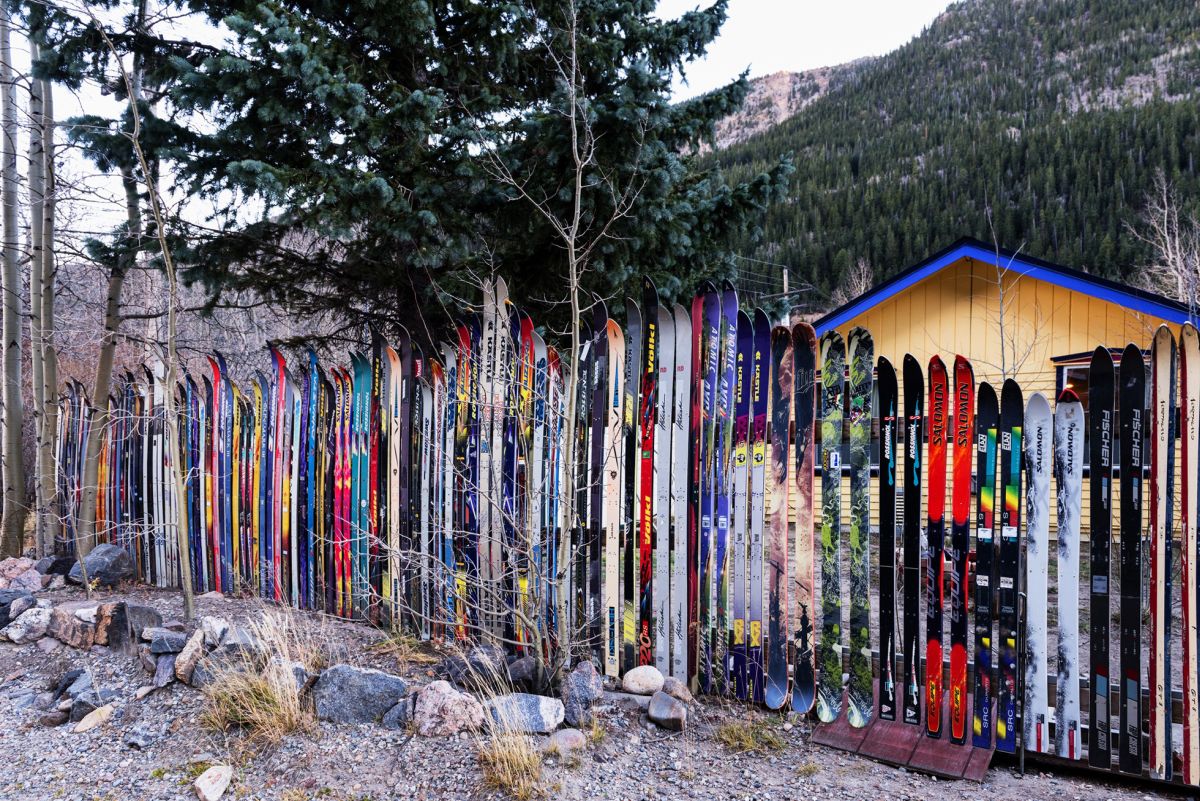
Looking for something that resembles a white picket fence but has more color and less uniformity? Xtreme Deals suggests tacking up sets of skis in different colors and heights to create a design similar to a picket fence.
This works particularly well in areas around winter lodges and cottages.
How to Match a Types of Fences to Your House
There are a handful of things to consider when making a final selection. D2 Landscaping walks us through a few of them.
- Purpose
- Are you trying to keep things in or out? Is it for decoration or to serve a purpose?
- Materials
- Wood, metal, or vinyl? Composite? Steel or iron? How durable do you need it to be, and how do you want it to look?
- Texture
- There are different textures and designs you could add if you wanted to. You can even vary your construction – wood and corrugated metal, perhaps.
- Style
- There’s little to stop you here other than your imagination. Just make sure it works with the style of the house you’re adding it to
- Color
- Like your style, this should, in some ways, match your house. Consider matching them to your trim or aim for complementary colors.
- Entrances and Exits
- How many do you need? What are the best locations for them?
Types of Fences FAQ
What is the strongest type of fencing?
According to Diversified Fence Builders, Inc, iron is the strongest material used to make fences.
What is the cheapest type of fencing?
Treated pine is the least expensive at $14-$20 per linear foot installed. Chain link is more costly at $17-$20 per linear foot installed and can be more durable than wood.
What type of fence adds to property value?
Not all fences add property value, but privacy fences can. And decorative styles can add curb appeal and influence the purchase price.
Types of Fences Conclusion
There are many things to consider when deciding which types of fences will best suit your home and your design preference. Materials range from wood to metal to vinyl to composites, and they each have something to offer in terms of durability, color, and style.
Remember that most people will need to pay for materials and professional installation when determining your budget and choices. And select an option that complements your home’s existing style and color. Lastly, check with your HOA if you have one, and let your neighbors know your plans.
